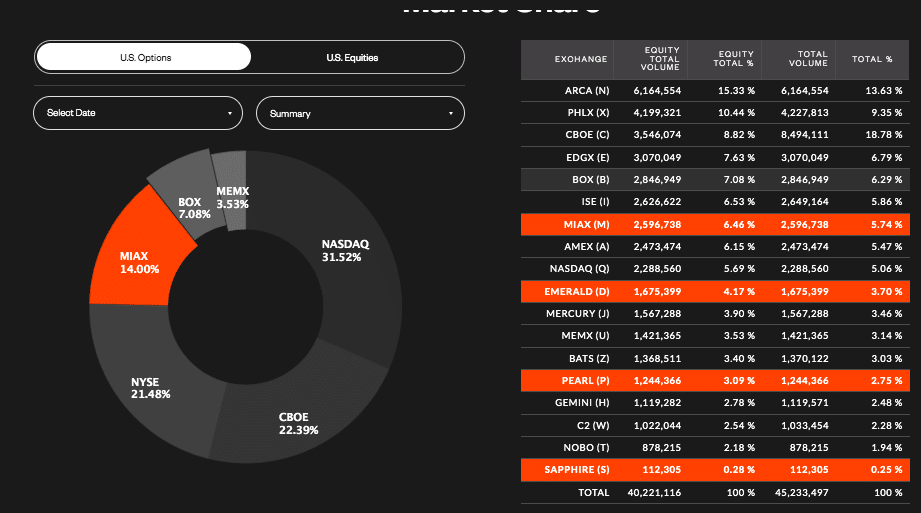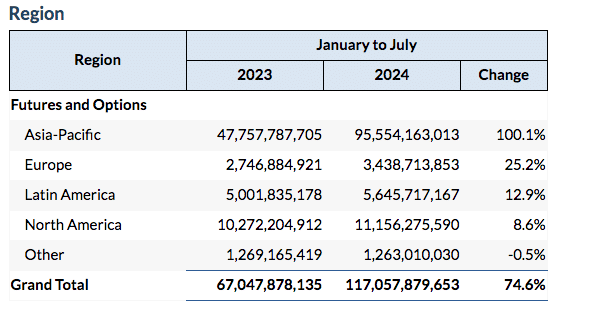London – 10 September 2024: Asset managers are increasingly using Transaction Cost Analysis (TCA) to drive insights beyond traditional uses as well as expanding the scope of asset classes covered, a report from Acuiti has found.
TCA is a crucial tool for asset managers that has risen in importance as costs have escalated, regulatory requirements have been imposed and increased competition has put a spotlight on execution efficiency.
In order to better understand how asset managers are adapting their approaches to TCA, Acuiti partnered with Abel Noser Solutions, a Trading Technologies (TT) company, to conduct a study into how firms are evolving their strategies. The whitepaper, The Growing Sophistication of Transaction Cost Analysis, is based on a survey of senior executives at 64 asset management firms across the global market, released prior to TT’s second annual TT Connect event in London on Thursday: Unlocking Profit with Data & Analytics.
Over the past decade, approaches to TCA have evolved from a simple measurement focused on basic metrics such as commissions and spreads to a holistic view across multiple metrics, including market impact and a broader range of inputs.
The study found that 65% of respondents to the survey had increased the sophistication of their analysis of TCA data over the past five years.
Use cases for TCA among asset managers have proliferated in recent years with applications now including risk management, alpha creation and marketing to investors in addition to more traditional use cases, such as internal compliance and decision making on broker selection.
Asset managers are also taking a more sophisticated approach to how TCA is embedded within their workflows. This is, however, an ongoing process for firms. For example, while 87% of respondents recognised the importance of integrating TCA into their OMS/EMS, less than half currently had that functionality.
Challenges still remain for firms, with 94% reporting that poor data quality hampered their ability to effectively measure TCA. Other major challenges firms faced were seen most in measuring liquidity and establishing the market impact of a trade.
As the use cases of TCA increase with the advance of technology solutions to measure and analyse the data, so too do the asset classes that are in scope for TCA. TCA is most mature and widely used in equities, where data availability and standardisation are the most advanced.
However, this survey found that asset managers are increasingly deploying TCA in other asset classes outside equities.
Asset managers taking part in the study said they commonly applied TCA to fixed income and equity derivatives. Less commonly, respondents also applied TCA to commodities and listed and OTC fixed income derivatives.
Peter Weiler, TT’s EVP Managing Director, Data & Analytics, said: “The findings in the study correlate with our own experience at Abel Noser and TT in which asset managers and other clients are looking to increase the applications of TCA across both asset classes and the trade lifecycle. This is evidenced in part by the demand for our new listed derivatives solution, TT Futures TCA, which was released in June.”
“Over the past decade, TCA has gone from a retrospective, compliance-focused process to one in which valuable insights can be driven across the trade workflow,” says Ross Lancaster, Head of Research at Acuiti.
“As firms find more use cases for TCA, the need for high quality, real-time data also increases, which is causing challenges for some firms. However, for the firms that can achieve data quality across asset classes, there is significant value to be gained both in terms of trade optimisation as well as in alpha generation.”
Download full report here: https://www.acuiti.io/the_growing_sophistication_of_tca/
Taking place on the afternoon of 12 September at the Andaz London Liverpool Street, TT Connect: Unlocking Profit with Data & Analytics is aimed at helping senior-level leaders from the international trading community discover how trends in artificial intelligence (AI), compliance, regulatory technology, data and consolidation will impact the capital markets. The event featuring a roster of expert speakers and panelists is open to members of sell-side and buy-side firms with complimentary registration.
About Acuiti
Acuiti is a management intelligence platform designed to provide Senior Industry Professionals in the Derivatives Industry with high-value insight into industry-wide performance and business operations. Acuiti provides a platform through which our exclusive network of Senior Industry Executives can share and source information on day-to-day operational challenges, providing them and their management teams with increased transparency and in-depth analysis to make more informed decisions and benchmark company performance. Financial Institutions benefiting from our services include Banks, Non-bank FCMs, Brokers, Proprietary Trading Firms, Hedge Funds and Asset Managers.
About Abel Noser Solutions, a Trading Technologies Company
Abel Noser Solutions has long been respected as a leader in the campaign to lower the costs associated with trading. The company is the industry-leading provider of transaction cost analysis with over 350 global clients subscribing to its multi-asset TCA and compliance products directly or through a network of resellers, distribution partners and strategic alliances. In 2022, Abel Noser was named the Top “Best-in-Class” Vendor in the Global Multi-Asset Class TCA Aite Matrix Report. Learn more at www.abelnoser.com.
About Trading Technologies
Trading Technologies (www.tradingtechnologies.com) is a Software-as-a-Service (SaaS) technology platform provider to the global capital markets industry. The company’s award-winning TT® platform connects to the world’s major international exchanges and liquidity venues in listed derivatives alongside a growing number of asset classes, including fixed income, foreign exchange (FX) and cryptocurrencies. The TT platform delivers advanced tools for trade execution and order management, market data solutions, analytics, trade surveillance, risk management, clearing, post-trade allocation and infrastructure services to the world’s leading sell-side institutions, buy-side firms and exchanges. The company’s blue-chip client base includes the Tier 1 banks as well as brokers, money managers, hedge funds, proprietary traders, Commodity Trading Advisors (CTAs), commercial hedgers and risk managers. These firms rely on the TT ecosystem to manage their end-to-end trading operations. In addition, exchanges utilize TT’s technology to deliver innovative solutions to their market participants. TT also strategically partners with technology companies to make their complementary offerings available to Trading Technologies’ global client base through the TT ecosystem.
For more information, contact:
For Acuiti:
Will Mitting
Tel.: +44 (0) 203 998 9190
Email: willmitting@acuiti.io
For Trading Technologies:
Ellen G. Resnick
Crystal Clear Communications
+ 1 773-929-9292; +1 312-399-9295 (mobile)
eresnick@crystalclearPR.com
Elise Fleischaker
Trading Technologies
+1 312-476-1139
elise@trade.tt




















The Dawn of Commodities Manipulation 2.0
By Andrew Waters, Global Head of Regulatory Affairs, TradingHub
Whether it is high-profile enforcement actions or the emergence of more sophisticated manipulation threats and tactics, today’s commodities market manipulation landscape is a far cry from that of yesteryear.
Gone are the days where investment bank regulatory, risk and compliance teams only needed to have their eyes peeled for the “same-old” single asset spoofing that dominated the commodities manipulation landscape for decades. Instead, these professionals are needing to come to grips with a significantly more diverse and advanced commodities manipulation environment; one that is seeing abuse spread across venues and assets. And as the temptation to squeeze prices for large futures contracts ahead of agreements surges, the OTC commodities market will only continue to grow riper for manipulation, not less so.
This has created a daunting problem for investment banks to solve. Not only is abuse activity becoming more complex, but it is doing so at a time where the regulatory community has shown that it is not afraid to flex its muscles when it comes to enforcement.
Now is the time when investment banks need to not only step back and reassess the evolving commodities manipulation landscape that they find themselves in, but also their own trade surveillance operations, what gaps may exist and, most importantly, the steps they can take to solve them.
With that in mind, here are several key items investment banks need to keep in mind as they prepare for the dawn of commodities manipulation 2.0.
The cross-product manipulation wakeup call
Over the last decade in particular, cross-product and cross-venue abuse has quietly become a major thorn in the side of trade surveillance across asset classes. Previously most closely associated with fixed income – given how easy it is for manipulation of one price to impact multiple instruments – cross-product manipulation is now a firm fixture in all asset classes, from equities and foreign exchange to commodities. This creates a particularly dangerous risk landscape for banks as cross-product strategies are a central cog in how nearly every sell-side desk makes money – for example, in the practice of off-setting risk from illiquid client-transactions with benchmark or listed products. As instances and opportunities for cross-product manipulation continue to rise, banks are still having issues detecting cross-product abuse because they are still not deploying strategies that are capable of accurately assessing the risk sensitivities shared between assets in a trading action. Risk and compliance teams must adapt to a whole new threat ecosystem that banks have yet to effectively reckon with, and clearly underlines why a reset in trade surveillance methodologies, tactics and tools is needed.
Doing away with rules-based systems
Historically, trade surveillance tools have been predicated on a slew of pre-set rules that are designed to flag any instances where a trader is intentionally trying to manipulate instruments to their advantage. In theory, this makes sense. But in practice, it has become not just unwieldy, but ineffective.
Because these rules-based systems cast such a wide net in order to catch every instance of potential manipulation, a mountain of mostly false alarms are created for surveillance teams to sort through. More importantly, not only does this result in a huge amount of wasted time and money but it creates an environment where surveillance teams simply do not have the bandwidth to be as thorough as they would like to be against growing backlogs, increasing the risk of manipulation instances slipping under the radar. Rules-based trade surveillance methodology is losing its relevance to today’s market structure. We need to find ways to truly measure the market impact of trades involving commodities.
Adopting a trading floor surveillance view
Investment banks face a true make or break moment because their trade surveillance paradigm is facing a true make or break moment: either adapt and innovate or run the risk of falling afoul of regulators and get accustomed to a heaping pile of fines and reputational black eyes.
This will not be an easy transition. The sophistication of financial markets has compounded in the past five years alone. Legacy systems have proven that they can no longer be relied on to capture instances of suspicious activity, and simply bolting on to what is already in place will likely only complicate matters and make surveillance more challenging. Instead, if investment banks are truly serious about tackling these emerging challenges, they need to take a much broader approach whereby not only do they revamp their technology capabilities but shift their entire strategy to a proactive approach that is informed by a trading floor view.
Traders think in a way that today’s surveillance systems simply do not: in terms of risk sensitivities, not rules. Because of the interconnectedness of commodities, suspect trades in a certain instrument will likely form part of a broader abusive strategy. Rather than treat instances individually, a sophisticated surveillance system should look to group them together creating a much more informed risk map versus a scattershot of individual instances. The most advanced risk-based method would detect instances like the episode in 2020 when the CFTC fined JP Morgan $920 million for manipulating the price of precious metal and US. Treasury futures contracts via an unlawful spoofing scheme.
Having this type of view will help trade surveillance teams establish a much clearer throughline of commodities traders’ positions to see if they are involved in not just single asset manipulation but perhaps a much broader cross-product scheme. Moreover, a surveillance system that has the ability to break risk down into its constituent parts helps compliance and risk teams save time and money by prioritizing higher value alerts.
—
This is not your grandfather’s or even your father’s commodities manipulation world. Simply put, today’s manipulation is far more advanced, and regulators are far more forceful when doling out enforcement actions. Moreover, while simply using technology to help mitigate trade surveillance risks might have been enough to appease regulators five or 10 years ago, regulators now mandate that businesses are effectively using technology in a proactive and progressive way to avoid manipulation. The sooner investment banks embrace this new “way of doing business” the better chance they have to avoid regulatory hot water, and the better chance they have to carve out their trade surveillance as a key differentiator among competitors.